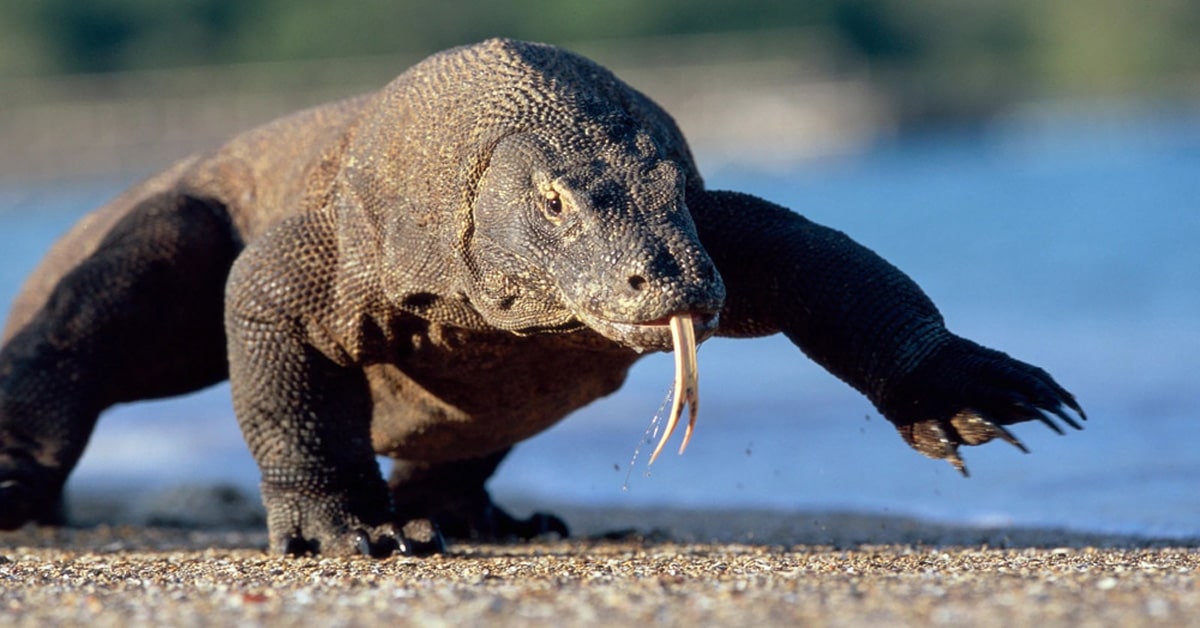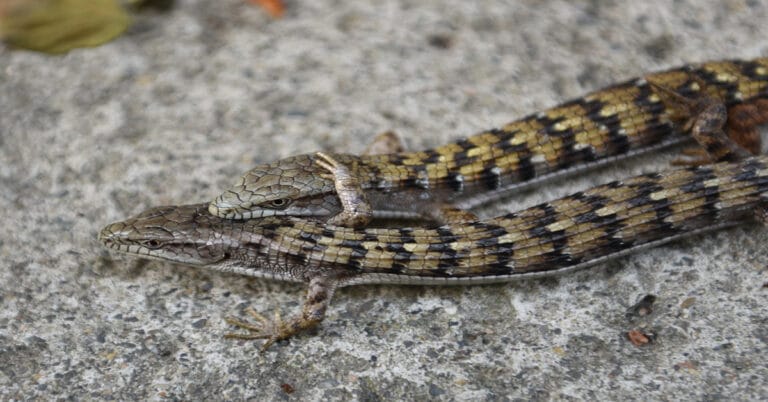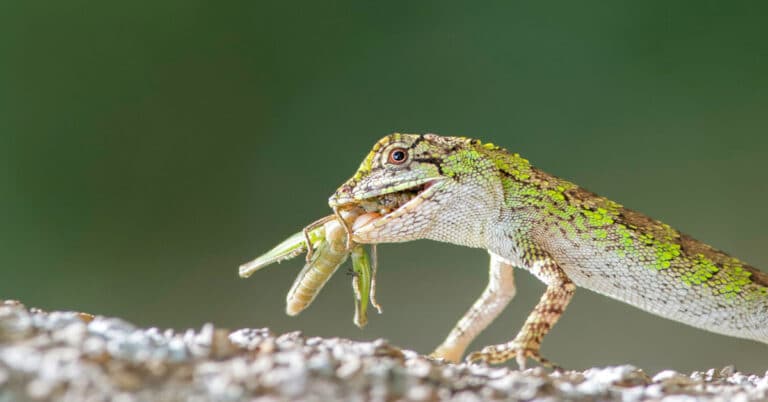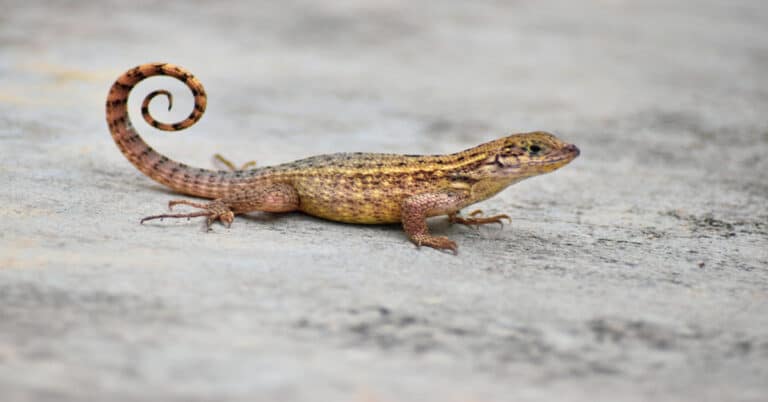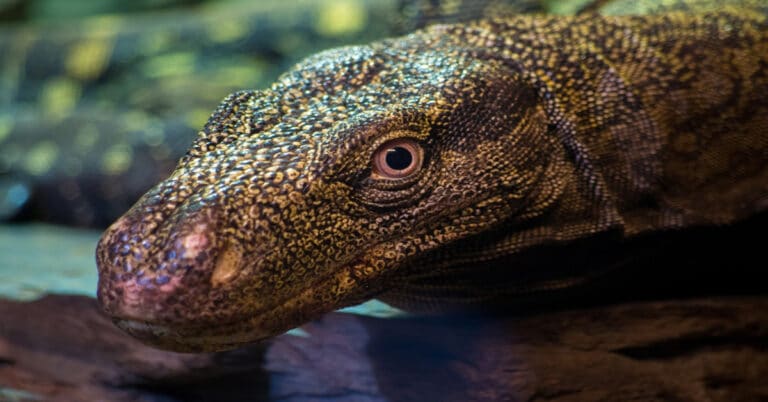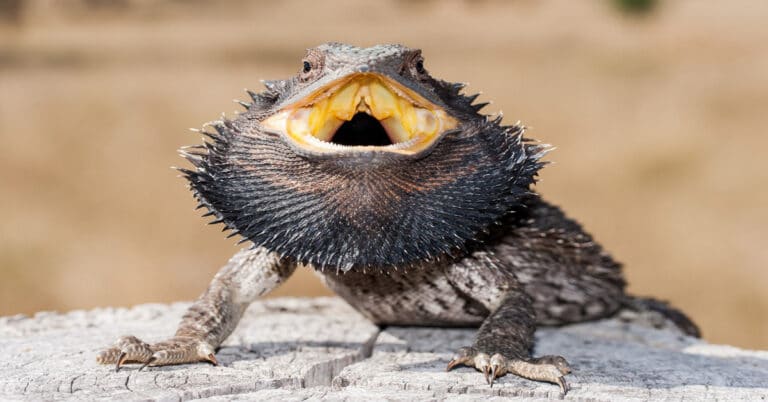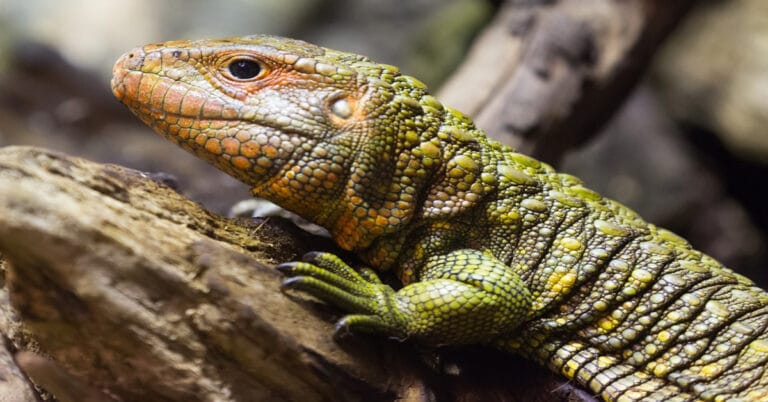Dragon Lizard
Scientific Classification
| Kingdom: | Animalia |
| Phylum: | Chordata |
| Class: | Reptilia |
| Order: | Squamata |
| Family: | Varanidae |
| Genus: | Varanus |
| Subgenus: | Varanus |
| Species: | V. komodoensis |
| Binomial Name: | Varanus komodoensis |
Dragon lizards also called Agamids, are some of the most distributed lizard species on this planet. You usually find them in warm environments of Southern Europe, Australia, Asia, and Africa. With 300 types in the species, their size ranges from five inches to one foot. You can find them in an array of colors, and they feed on eggs of smaller lizards, seeds, berries, grass, and insects. The popular lizards among them are the frill-necked lizard and the Rainbow Agama. Interestingly, the males in a few species of Agamids, evolve attractive body colors in the breeding season, and this has an effect on reproductive behavior and communication.

Some of the well known dragon lizards
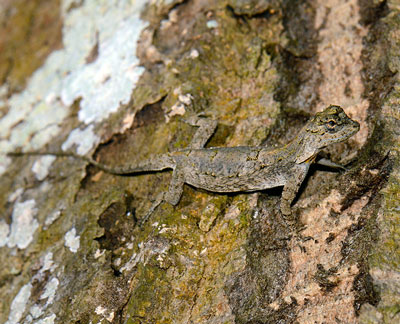
Draco Volans, or the Flying Dragon, is a member of the genus of gliding lizards Draco. It can spread out folds of skin attached to its movable ribs to form “wings” that it uses to glide from tree to tree over distances upwards of 8 meters (25 feet); however, like all modern reptiles, it lacks the ability to sustain powered flight, and is capable only of gliding. Its wings are brightly colored with orange, red and blue spots and stripes, and they provide camouflage when folded. The flying dragon can reach lengths as long as 19 – 23 cm. It feeds on arboreal ants and termites.
The Komodo Dragon (Largest dragon Lizard)
The largest of living dragon lizards is the Komodo dragon, a kind of monitor lizard. The ancestral history of the monitor lizard goes back to more than 100 million years. Western scientists did not know about the Komodo dragon until 1912. The name Komodo dragon came from the rumors about a huge dragon-like lizard in the Lesser Sunda Islands, The Komodo dragon’s forked and yellow color can easily remind us of the legendary dragons that spit fire in folk tales of yore.
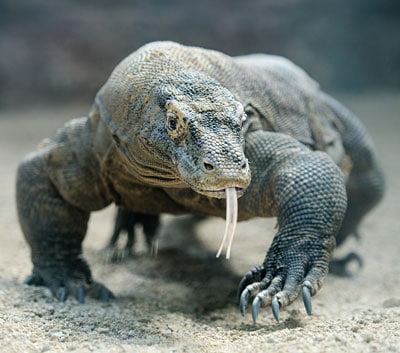
Anatomy
The color of the Komodo dragons ranges from yellow to gray, which depends on their location. They have rough, tough skin with bony plates called osteoderms strengthening the skin. These also protect them injuries from bites and scratches. The tail is long and muscular. They have powerful claws. The Komodo dragon can grow up to 3 meters and can weigh up to 135kgs.
Behavior
The Komodo dragon has a leisurely lifestyle. It comes out of its burrow and selects a sunny spot to warm up. After finding breakfast, it enjoys a long nice nap in a shady spot during the hotter parts of the day. After enjoying a late afternoon meal, the dragon gets ready to sleep till the next day. It is a lonely creature that prefers to live and hunt alone.
Habitat
You can find the Komodo dragons only on five islands in southeastern Indonesia. Four of these islands are within the Komodo National park. They are Komodo, Rinca, Gili Montang and Gili Dasami Islands. The fifth is the island of Flores. These volcanic islands have a rugged and hilly terrain, covered with forest or Savanna type grasslands.
Other Dragon Lizards
Bearded Dragons
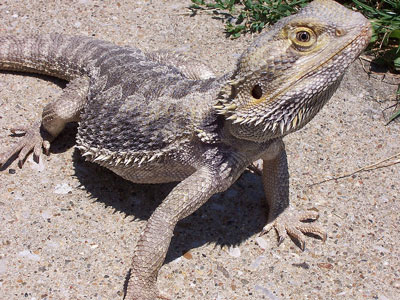
Most people accept that the bearded dragon lizards are among the best pet lizards you can have. They have a good temperament, they are docile, and many of them seem to enjoy handling. Being diurnal, they are active during the day and hibernate at night.A keeper of this animal can watch and enjoy its pranks all through the day.
Jacky Dragon
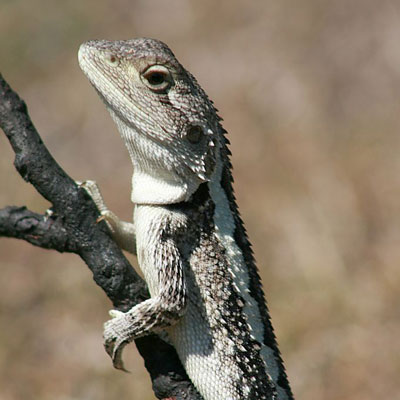
The Jacky Dragon or the Jacky Lizard is endemic to Southeastern and Eastern Australia. You can see them perched on trees and fencing posts. Do not confuse these lizards with other “Agamas” species.
Long Tailed Earless Dragons
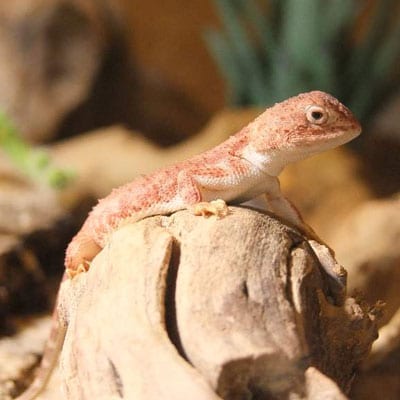
Long Tailed Earless Dragons are Agamas, belonging to Australia, that need care like bearded dragons. You can keep them in groups because they are sociable. They also have a habit of inflating their eyes from their sockets with a view to loose in the skin in the area around the eyes. They are flighty by nature, being only about two to three inches in length and do not like constant handling.
The Pebble Dragon or The Gibber Earless Dragon
(Tympanocryptis Intima)
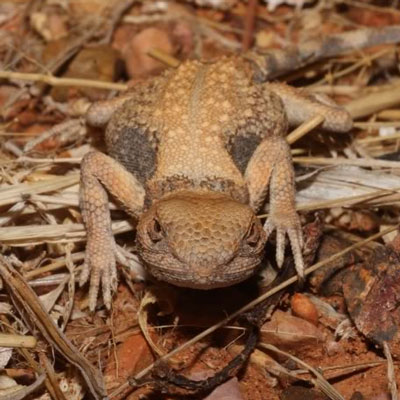
Many opine that the Pebble dragon or Tympanocryptis cephalus found in Queensland are actually the Gibber Earles Dragon or the Tympanocryptis intima. There this about 5 centimeters in length.
Eastern Water Dragon
(Intellagama – was Physignathus – leseuerii)
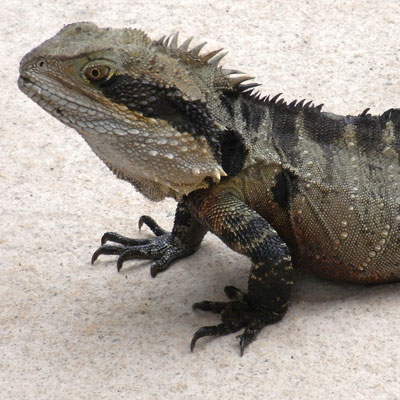
Growing to about 80 to 90 Centimeter length, the Eastern Water Dragon has shades of gray or brown color with a black stripe behind the eye on the side of the head and black bands running across the back and the tail. While normally the underbelly is whitish-cream, some males exhibit red color on their tails, back and heads. They have strong legs adapted to swimming and you find them mostly inhabiting the coastal areas from Northern Queensland to Eastern Victoria.
Long-nosed Water Dragon
(Amphibolurus -was Lophognathus- longirostris)
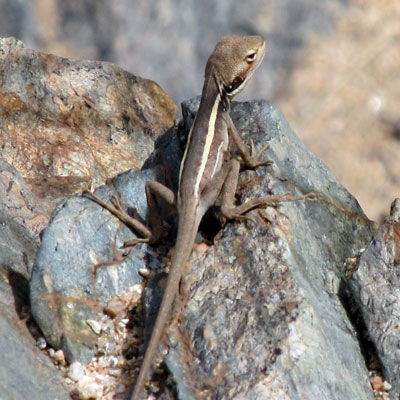
Some People call the long nosed dragon has the Australian Water Dragon under the classification Amphibolurus longirostris. This reptile is conspicuous or its long tail, slender limbs and long snout. They are gray to reddish brown in color and exhibit a faint stripe on their lower jaw with another prominent stripe on its dorsolateral sides.
Red Barred Dragon (Ctenophorus Vadnappa)
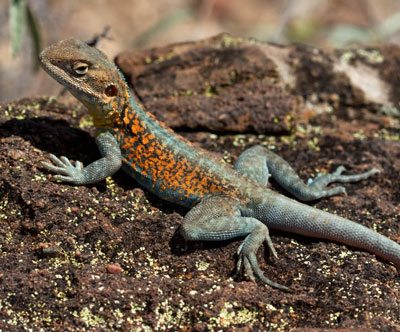
Some people in Australia call these Red Barred Dragons as Comb-bearing dragons and these have a wide distribution among the dragon lizard community in Australia. The comb-like scales around its eyes give it its name “Comb-bearer”.
Crested (Bicycle) Dragon (Ctenophorus Cristatus )
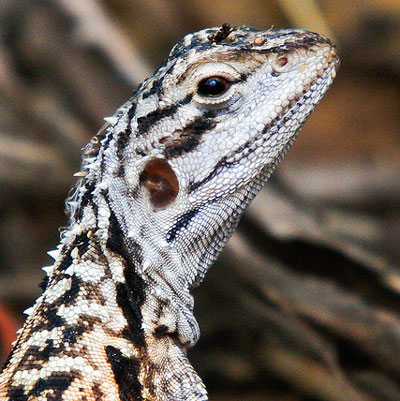
This Crested Dragon is an inhabitant of Eyre Peninsula in Southern Australia. The males of the species display attractive colors during breeding and are generally more colorful than the females or the Juveniles. They use their hind legs for high speed running and that is why they have the word, “Bicycle” attached to their name.
Mulga Dragon (Caimanops Amphiboluroides)
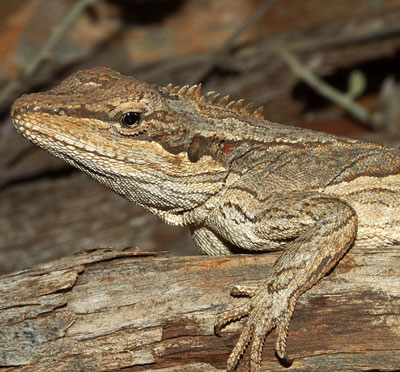
Among the Agamid Lizards of Western Australia is the Mulga Dragon, an exclusive member belonging to the genus Caimanops, a name derived because its jaw has the shape of a Crocodile’s jaw. These lizards range to about 250 mm from snout to tail end. The body and legs show gray color speckled with streaks of brown, thereby providing an excellent camouflage in the trees that are its natural habitat. They are specialists in concealment and stay motionless when they sense a predator.
Ring Tailed Dragon (Ctenophorus caudicinctus)
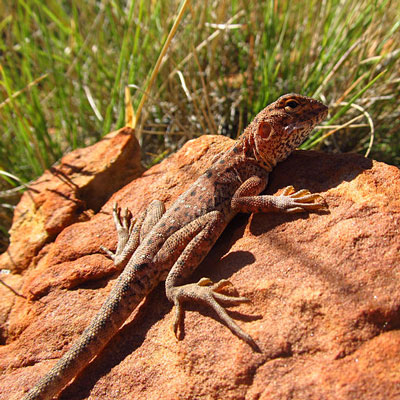
The Ring-tailed Dragon, contrary to the general perception of being a large reptile, is actually a small lizard with fairly long limbs, a reddish-brown color and pale perpendicular bans alternating with thin light bans along its back. These bands seem to fade with time as they grow older, but are always more prominent in the males. They are sexually dimorphic with the males showing a dark mark in the chest area. A prominent crest running from the back of its neck along its back characterizes the ring-tailed dragon.
Chameleon Dragon aka “Swell-headed Dragon”
(Chelosania Brunnea)
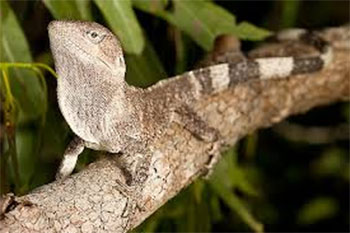
This Chelosania Brunnea is a reptile belonging to the Agamid class of dragon lizards, sometimes referred to as the Chameleon Dragon and one rarely comes across it. There is Not much information about the habitat of these lizards.
Boyd’s Angle-Headed Dragon
(Hypsilurus [Gonocepalus] boydii)
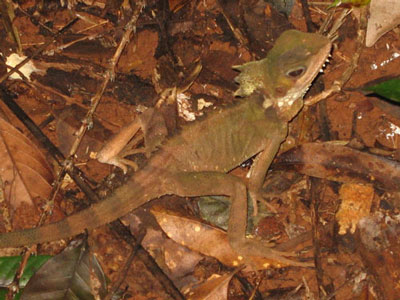
The Boyd’s Angle-Headed Dragon inhabits Cairns in Australia and you find them primarily in the Australian rainforests. They are small lizards that eat mainly insects. They are both diurnal as well as arboreal. Recordes indicate that they normally lay a clutch of 3 eggs at a time.
Western Netted Dragon (Ctenophorus reticulates)
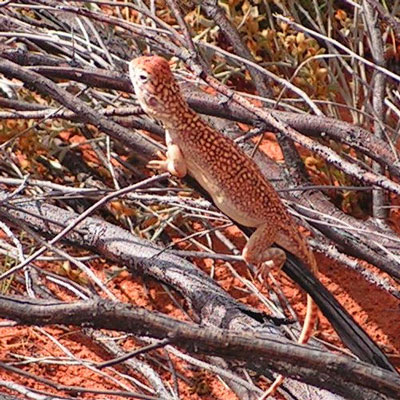
Closely resembling the Ctenophorus nuchalis or Centeral Netted Dragon, the Western Netted Dragon (Ctenophorus reticulates) is a robust and medium sized dragon that you see in the hotter parts of the year as they scuttle between bushes. A row of big scales that curve from their eyes to the tympanum characterizes this reptile. Their body does not have dorsal spines, they have short legs and a round head. Males exhibit darker black body pigments in their throat and chest areas that clearly differentiates them from the females. These reptiles inhabit the desert and food plains and shelter inside ground burrows that are not too deep. They mainly inhabit the Southern, Western and Southern part of the Northern Territory of Australia.
As a Pet
Housing
We must shape and size the habitat to accommodate their normal behavior and exercise. These lizards have varied growth rate and sizes. Their individualized needs also vary. You must consult a qualified veterinarian or a book on this species to find out their specific housing needs. Do not try to keep the large dragons like the Komodo that you better leave for the wild or to highly equipped zoos.For those dragons that you can handle, you must provide a hiding area and branches for basking. You can maintain less than 50% humidity by misting when needed. The substrate can be calcium based sand. The lizards may swallow Silica- based sand and create impaction. You can use Repti carpet substrate as another option. The temperature gradient can be 100.F for the warm end and 70.F for the cool end. You can provide radiant heat.
Food
Food items should not be more than 1/3rd of the size of the lizard’s head. This is to ensure that the young once can swallow these safely. The lizards can eat small insects like meal worms, earthworms and crickets. We must necessarily use commercially branded dragon food. Food items can be larger when they grow up. You should spray water on them every day and continue this until they stop sipping the water.
Breeding
You can easily determine the sex of these dragons by observing them even when they are a few months old. The males are more violent in behavior and more aggressive eaters. When these dragons are 5-6 months old, we can find out the sex by looking at the bulges of the hemipenes in the males. We can do this by observing several juveniles. The males develop a dark head and have wider heads as secondary sex characteristics. Males do the head bobbing to display their territory, but arm- waving can be done by both the sexes.
Handling
Dragon lizards tolerate interaction with humans. They will spend part of the day in a hiding spot in their habitat.

Having discovered a fondness for insects while pursuing her degree in Biology, Randi Jones was quite bugged to know that people usually dismissed these little creatures as “creepy-crawlies”.

